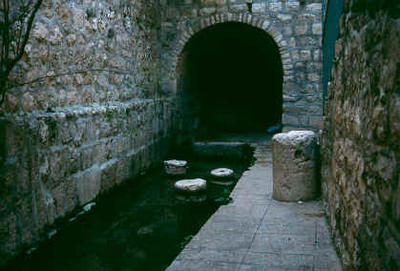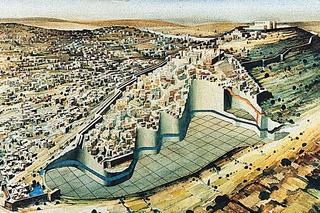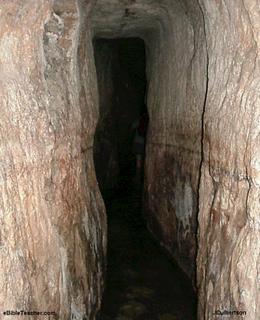Biblical Pool of Siloam Is Uncovered in Jerusalem
 Pool of Siloam reconstruction from the 5th century.
Pool of Siloam reconstruction from the 5th century.John’s gospel describes how Jesus cured a man blind from birth at the Pool of Siloam. I did not realize, however, that there was more than one Pool of Siloam. One is a reconstruction (above) from A.D. 400 and 460 by the empress Eudocia of Byzantium, who oversaw the rebuilding of several Biblical sites. Another is the original, the location of which had been long forgotten, and its very existence called into question. The accuracy of John’s description was also called into question, especially since John has the highest Christology than any of the other Gospels it was assumed the theologically-minded author did not care about the accuracy of historical or geographic details. I don't think it was a priority for him, but there is no reason to assume that he would make up entire locations.
Workers repairing a sewage pipe in the old city of Jerusalem have discovered the Pool of Siloam as described by John, less than 200 yards away from the reconstruction. The pool is a freshwater reservoir that was a major gathering place for ancient Jews making religious pilgrimages to the city.
New Testament scholar James H. Charlesworth of the Princeton Theological Seminary stated, "Now we have found the Pool of Siloam ... exactly where John said it was.''
The discovery puts a new spotlight on what is called the pilgrimage to Jerusalem, a trip that religious law required ancient Jews to make at least once a year.
Hershel Shanks, editor of Biblical Archeology Review, reported that the pool was fed by the now famous Hezekiah's Tunnel and is ``a much grander affair'' than archeologists previously believed, with three tiers of stone stairs allowing easy access to the water.


